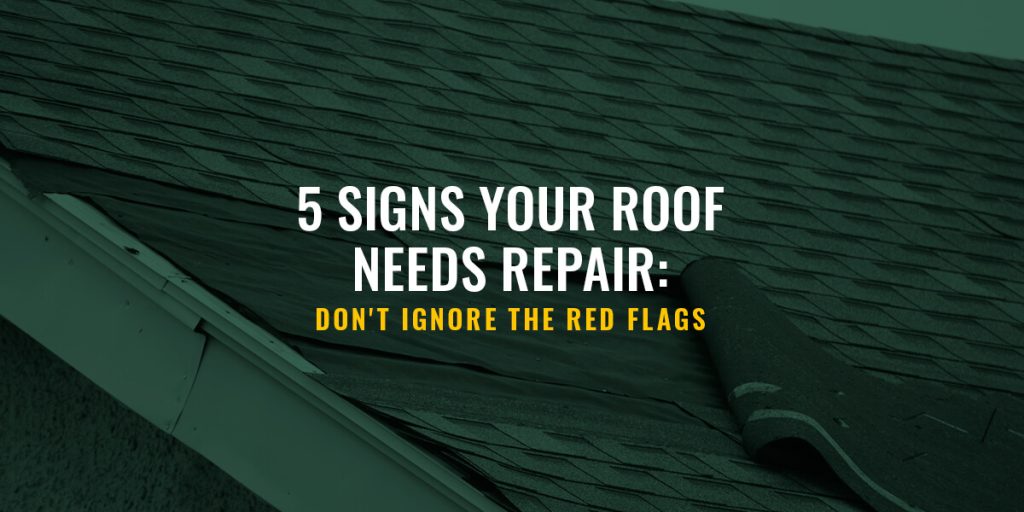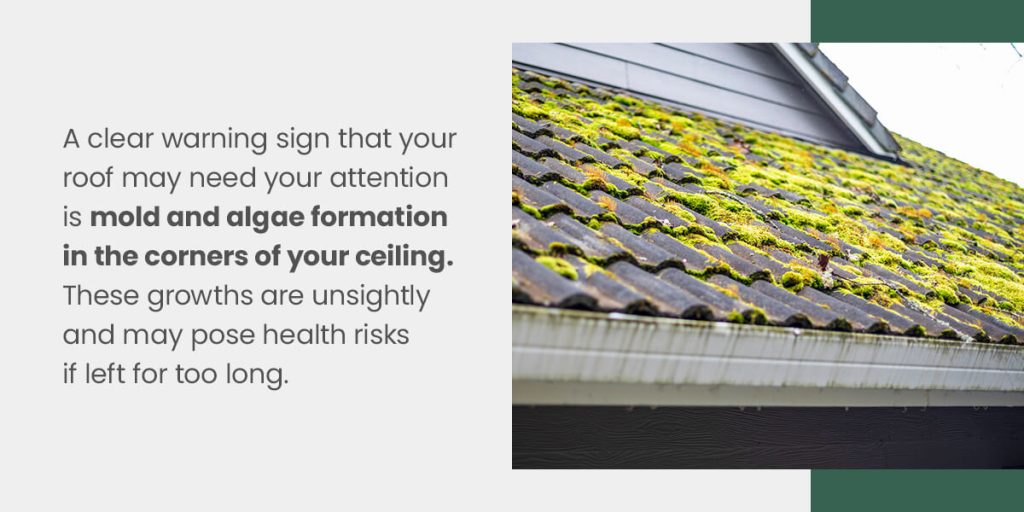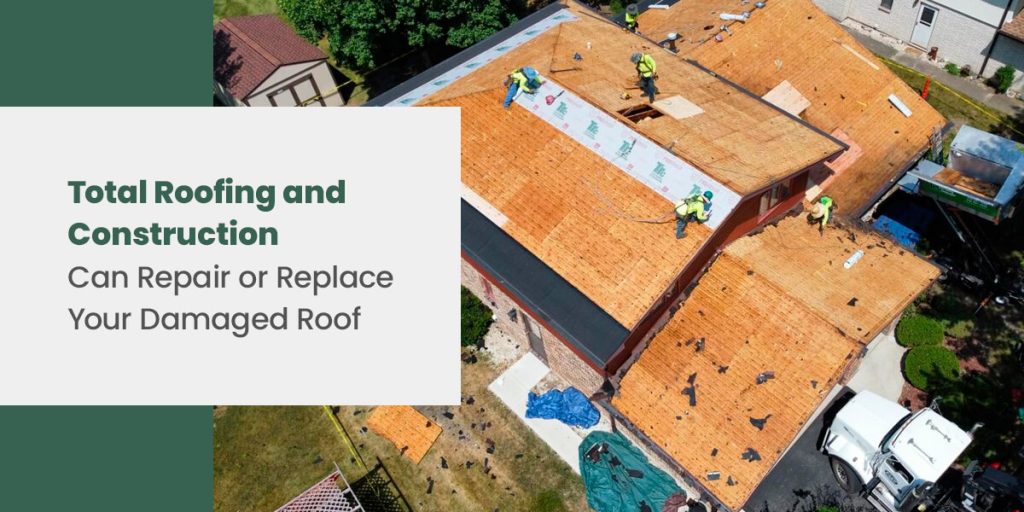
There are a number of warning signs you may encounter that tell you your roof needs repair. Some may not be as common or obvious as others, which is why it’s important to know what to look for. The following signs of roof damage may seem minimal at first, but they can lead to more damage and expenses if left unattended over time.
One sign of roof damage is leaks inside your home that stem from your roof. In most cases, leaks form in the roof and water collects in puddles on the attic floor after bouts of heavy rainfall before leaking into your ceilings and walls. Over time, you’ll be left with unsightly brown stains on your ceiling.
Another tell-tale sign of water leaks is when the paint or wallpaper on your walls or ceiling starts peeling, caused by moisture after the water evaporates and insufficient air and light to dry properly. Besides your interior walls, the exterior walls of your home may also show signs of leaks from your roof, so keep a close eye on all your walls after a hefty downpour.
Shingles are tile-like fixtures on your roof and come in various materials, though asphalt is the most common. Shingles help protect your roof by shielding it from the sun and other extreme weather elements. When shingles are damaged or missing, you’re prone to experience water leaks because the roof is left exposed.
It might not be easy to see whether the shingles are damaged or missing unless you physically inspect them by climbing a ladder. This is potentially dangerous, so we suggest getting an experienced roofing contractor to do an inspection. They are skilled in walking on roofs without causing damage and will have a full view of the extent of damage and missing shingles, if any.
Based on this, you can discuss the way forward to see how you can have your roof repaired by replacing the damaged or missing shingles.
Sagging roofs are unappealing and potentially hazardous, but they generally take a long time before they deteriorate to such an extent. The main concern with a sagging roof is the risk of it collapsing entirely, which may have dire consequences. If you’re vigilant, you may notice signs of sagging that could prevent it before it worsens. A few indicators include:
Shingles are covered by tiny granules that serve a significant purpose. A few reasons granules are important for covering shingles include:
Poor-quality shingles may lose granules sooner than better-quality ones. If they are installed incorrectly, they may also lose granules, so it’s important to have it done professionally to avoid this. Age is another factor — the older your shingles are, the more likely they will lose granules.

A clear warning sign that your roof may need your attention is mold and algae formation in the corners of your ceiling. These growths are unsightly and may pose health risks if left for too long.
The main issue with mold is eliminating moisture. Insufficient ventilation accelerates the growth of mold and algae. When the damage becomes extensive, you may notice musty odors in your home that are often associated with mold.
As soon as you notice mold, get a plumber or roofing contractor to check for leaks from a faulty pipe or a leaking roof.
Regular roof inspections are essential to ensure you don’t have to spend much on maintaining it through repairs. A few reasons it’s so important include:
There are some things you can do to maintain your roof. You might have to enlist the help of an expert at least once a year but it will save you money in the long run. A few tips for proactively maintaining your roof include:

With Total Roofing and Construction you can be sure the job will be done right. We have an extensive team of experts who are ready to assist you with a smile.
Your needs are what matters most to us. Whether you require roof repairs or a full roof replacement, we’ve got you covered. Call us or request a quote and we’ll come to your home to inspect your roof.